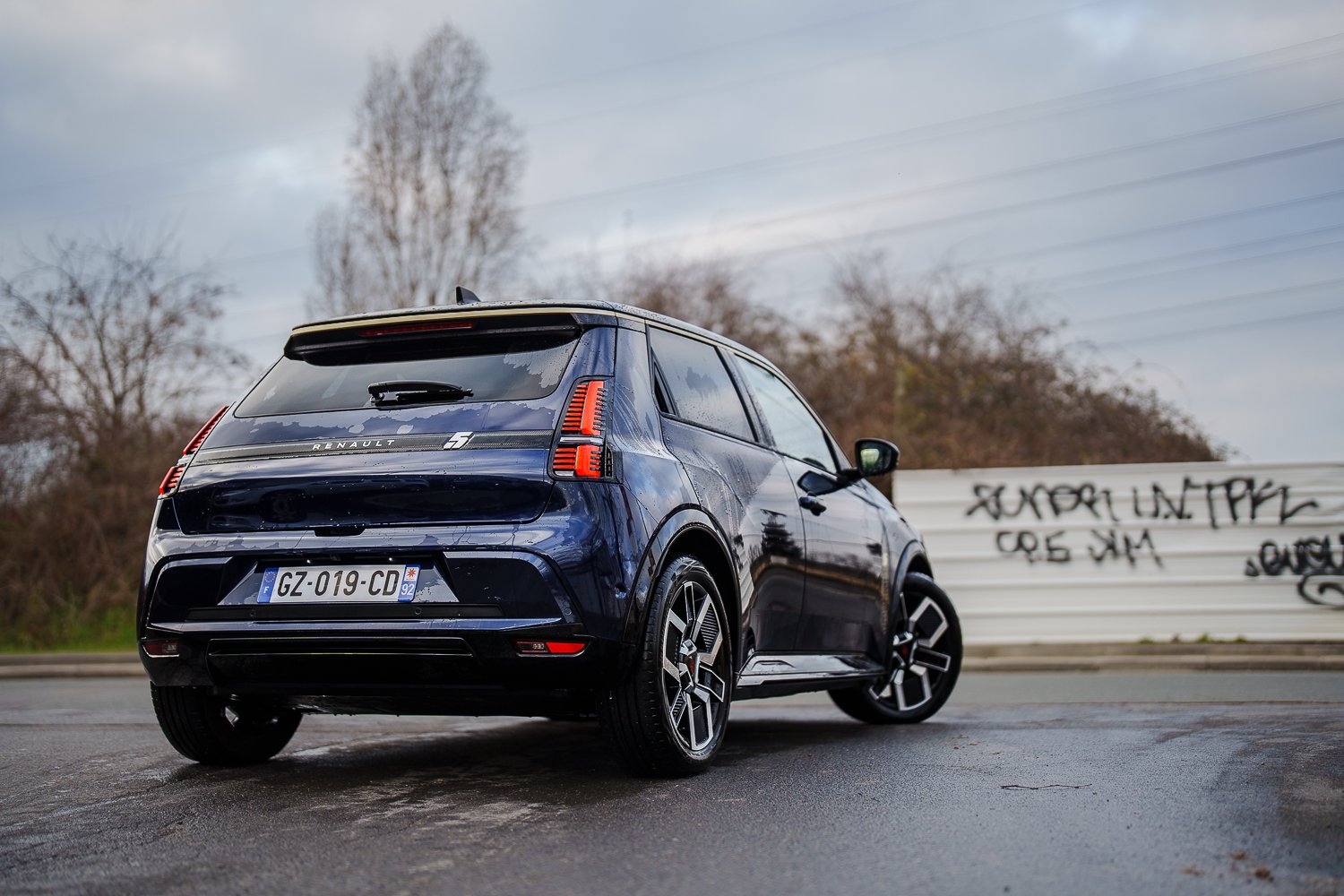The R5 is this little jovial boil that instantly gives a smile. A car that fits into effortless traffic, triggering in the passage of the thumbs up and smiling faces. A sacred tour de force at a time when beautiful cars more often arouse jealousy. This new test has only reinforced its sympathy capital a little more.
As a reminder, our first test underlined several faults which could prove to be penalizing on a daily basis. Some readers wanted a new test to confront our impressions with their own experiences. In normal times, it is rare that we can try a vehicle (professional constraints oblige), but the differences between your returns were such that we decided to dig more.
Before getting to the heart of the matter, let us lay a few bases on the person in charge of the test:
- I am not a novice in terms of car tests. I collaborate with the WorldOfSoftware, but I also test vehicles for other media, under another pseudo elsewhere.
- I am not a car pilot, even if I have already rolled a little on the circuit (and not only via gift boxes). However, this has no importance in the context of an automotive test, as piloting is the exact opposite of driving.
- The objective of a test is to verify whether the manufacturer’s promise is in real conditions and to assess whether the services announced are there.
With that, let’s take up this R5 test, in this version equipped with the Harman Kardon option at 600 euros and dressed in a night blue with golden keys, an obvious wink to a certain Clio Williams.
Trial context
The R5 was tested for a week as a main vehicle, on a daily basis, without reload at home, with two children, including a young age. We took the opportunity to carry out measurements and tests in two situations:
- 2 × 100 km route on small roads: Exactly the same conditions as for a Tesla Model Performance, in order to compare consumption. Regardless of the Price difference between the two, it should be kept in mind that the American SUV weighs 500 kg more, has additional 240 kW and a rab engine.
- Wet and winding course: Objective, check the road behavior of this revised and (slightly) corrected version.
Ruling and behavior
On a dry road, the R5 is healthy and responsive. It remains stable during an avoidance maneuver (crossing animal, last minute nest) and displays reassuring behavior.
On the other hand, on wet ground, driving aids activate fairly quickly when starting or frank accelerations: it easily skates at the outlet of the roundabout or turn if you press a little too strong. The trajectory corrector is vigilant, because the front tends to drop out, causing a slight floating of half a second before the electronics make up for the blow. Nothing dramatic, but it is necessary to be aware of it to avoid any surprise, because this results in vibrations and a steering wheel movement, direct consequence of activation of the trajectory corrector.
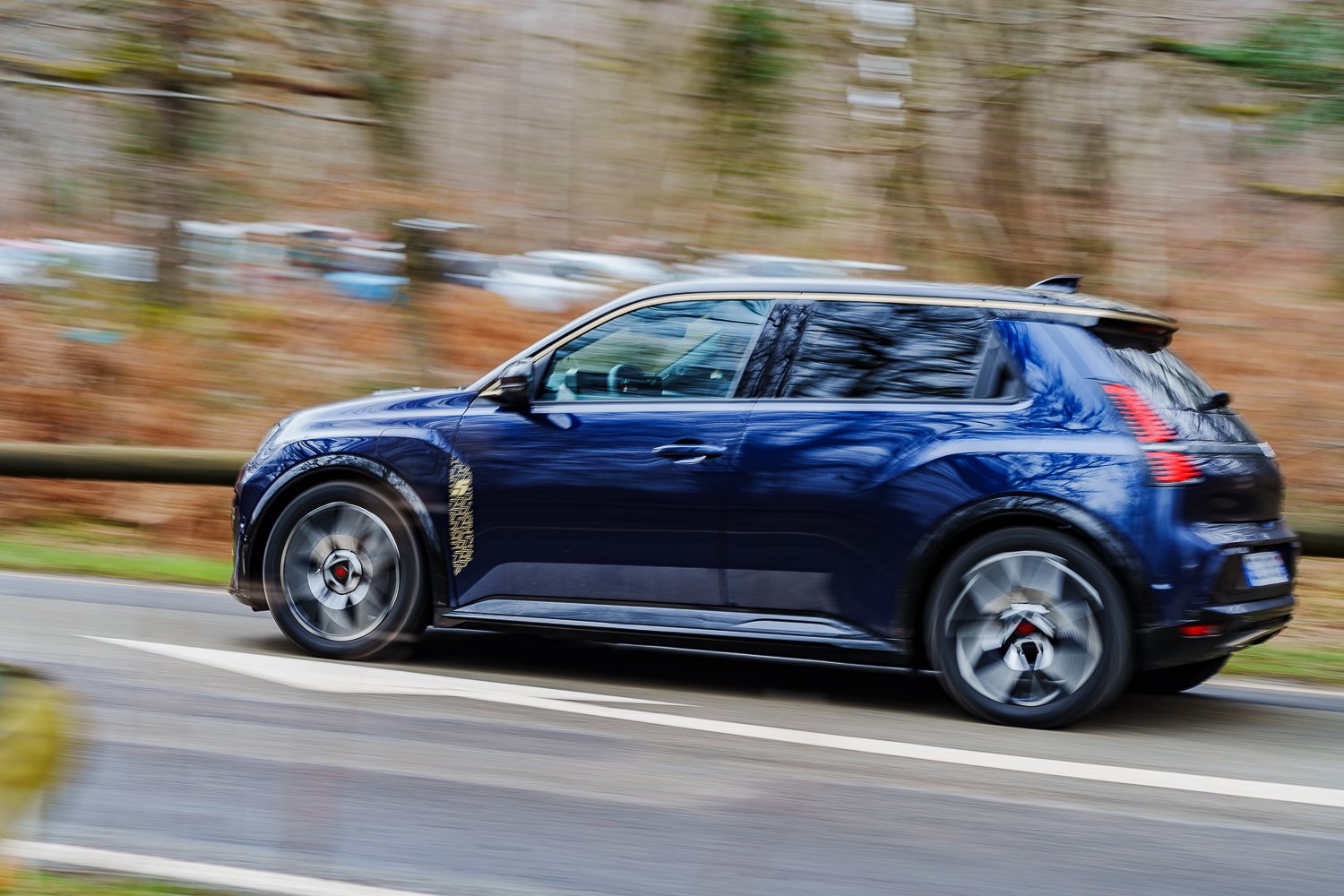
On the braking side, the pedal is no longer spongy as on the first model tested. It remains flexible, but progressiveness has improved significantly. On the other hand, one point does not change: the Brake mode does not stop the car completely, so still no real One Pedal. Too bad for an electric city car, but we had already talked about it in the previous test. Renault, for its part, does not communicate on the reasons for this choice.
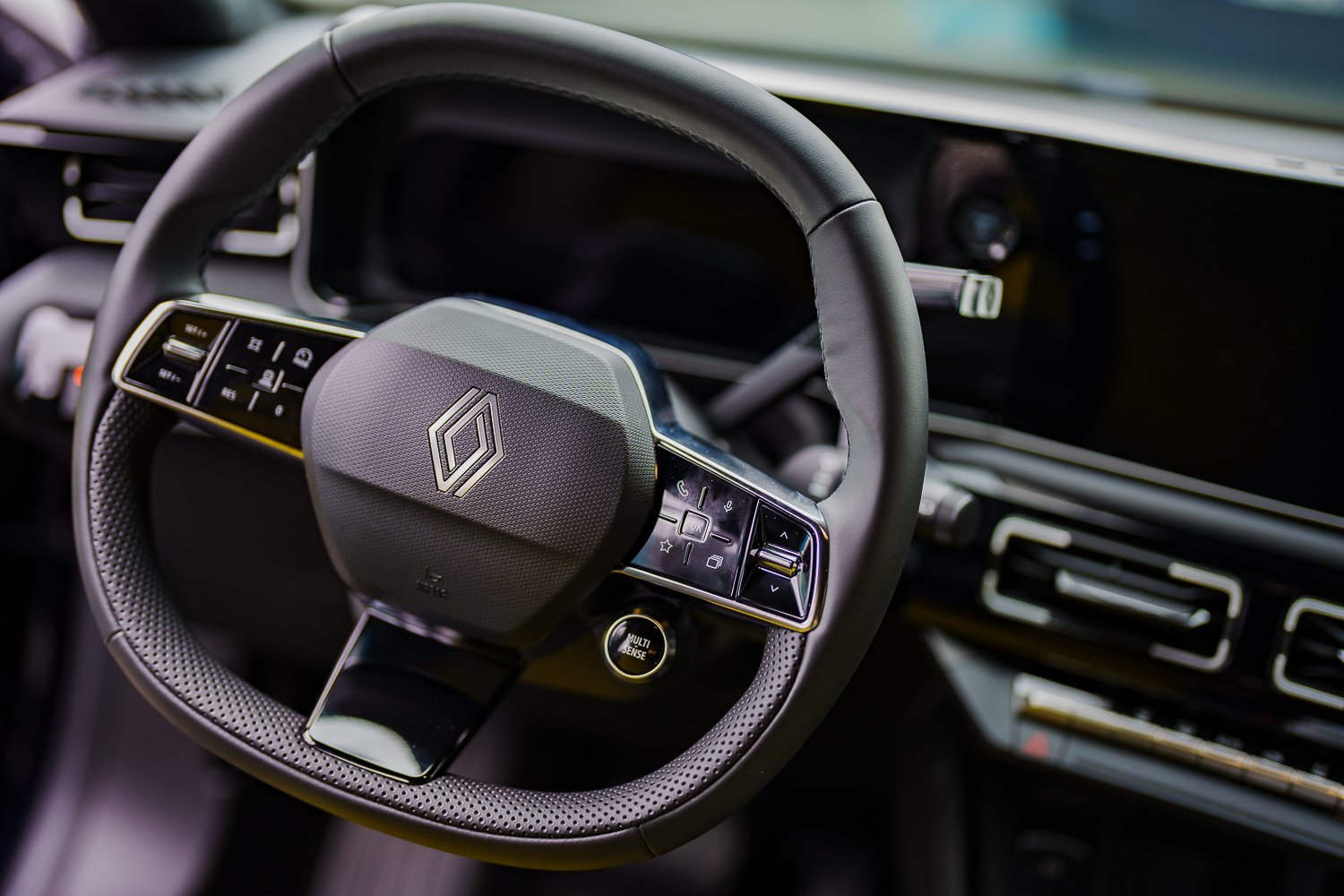
On the power side, no unpleasant surprises: the covers (80 to 130 km/h) are sufficiently muscular in comfort or sport mode. In eco mode, the pedal must be driven to the switch (overboost) to obtain an additional instant power.
Multimedia interface
Good news: we find Android Automotive and Waze on two shared screens, it’s practical.
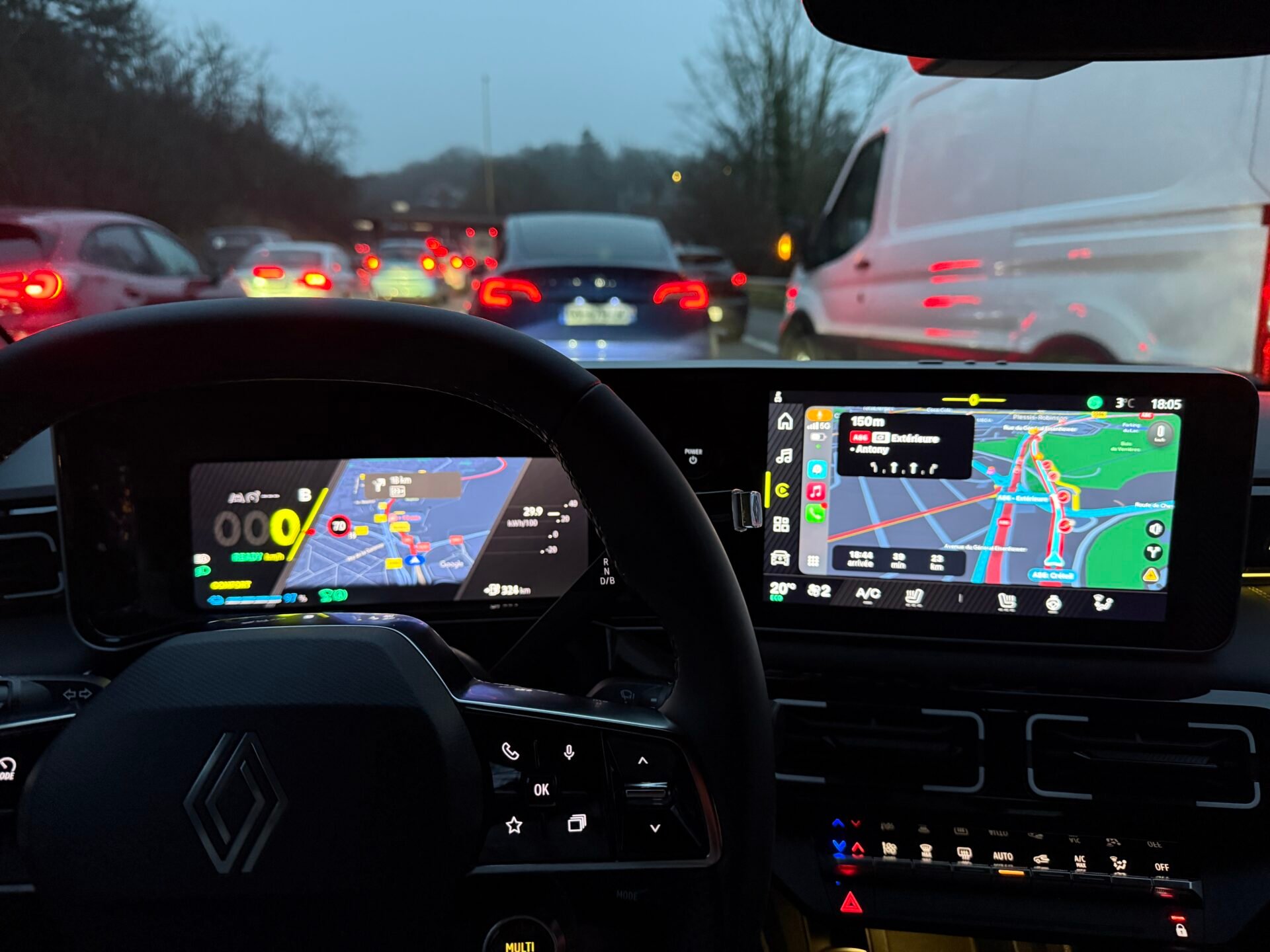
However, the menus remain a little austere, and the tree is lacking clarity. On the brightness side, you have to dive into the vehicle settings to lower it at least, while a brightness shortcut exists … without taking this parameter into account. Not very intuitive.
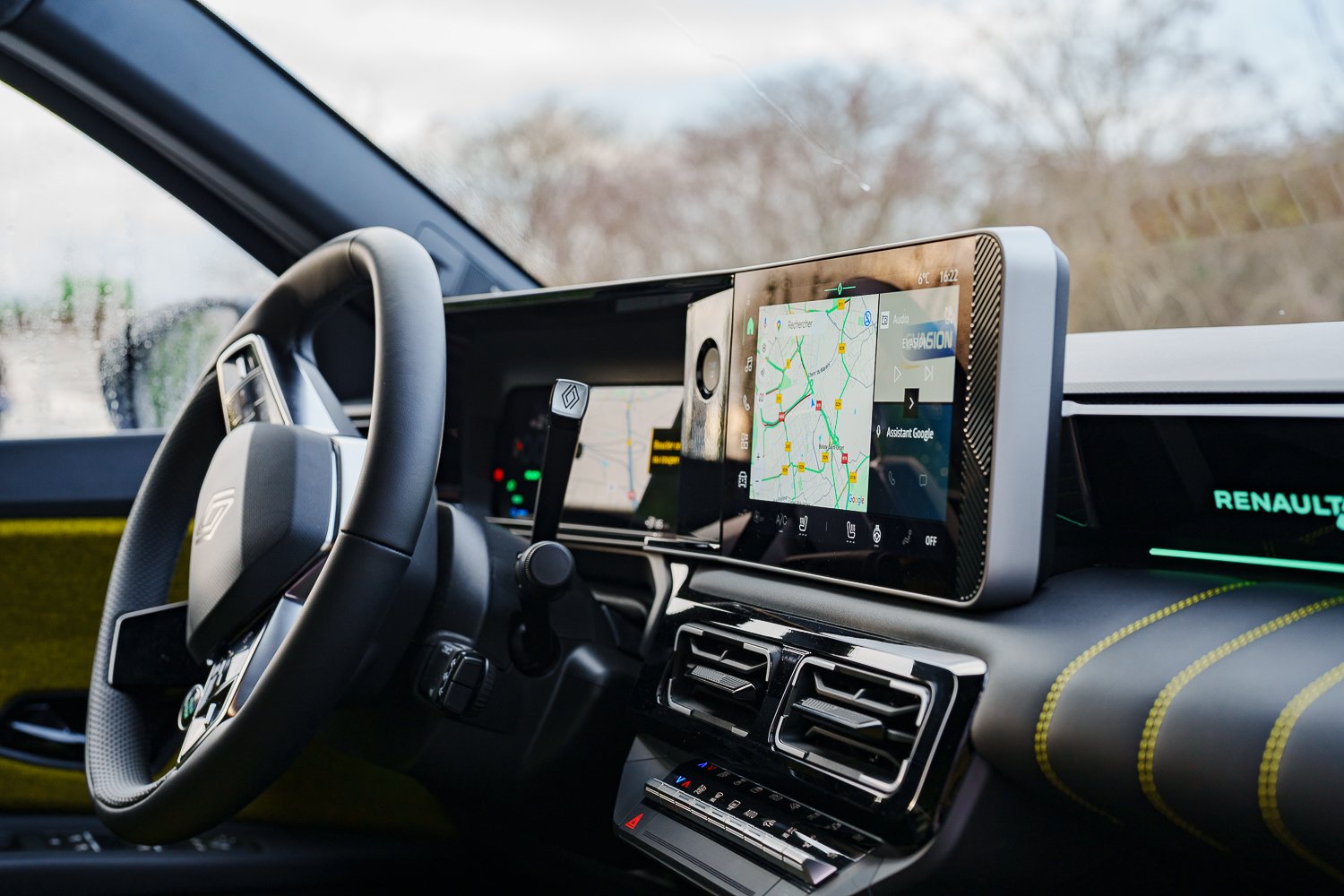
To start, a simple brief support on the button is enough, no need to keep it three seconds (mea culpa). Finally, the absence of a Park position on the speed selector may surprise at the beginning. You must regularly look for a button placed either above or between the commodos. We get used to it, but in 2025, we could hope for better.
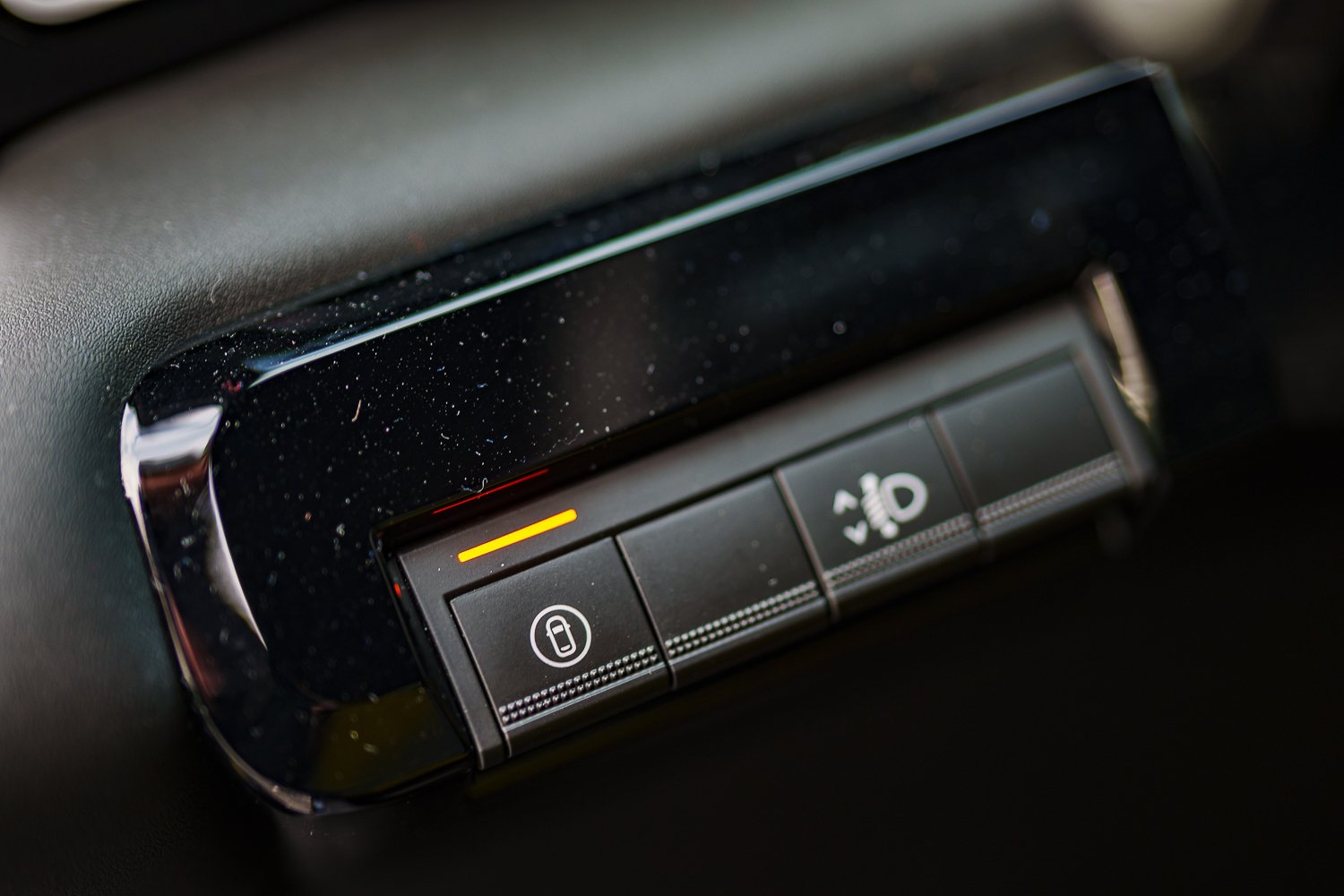
On -board space
This new one week’s test with two children at the rear confirms our first impression: the bench remains too narrow, especially with car seats. The trunk, on the other hand, turns out to be surprisingly spacious. But reverse these volumes would probably have been less “sexy” for the car line.
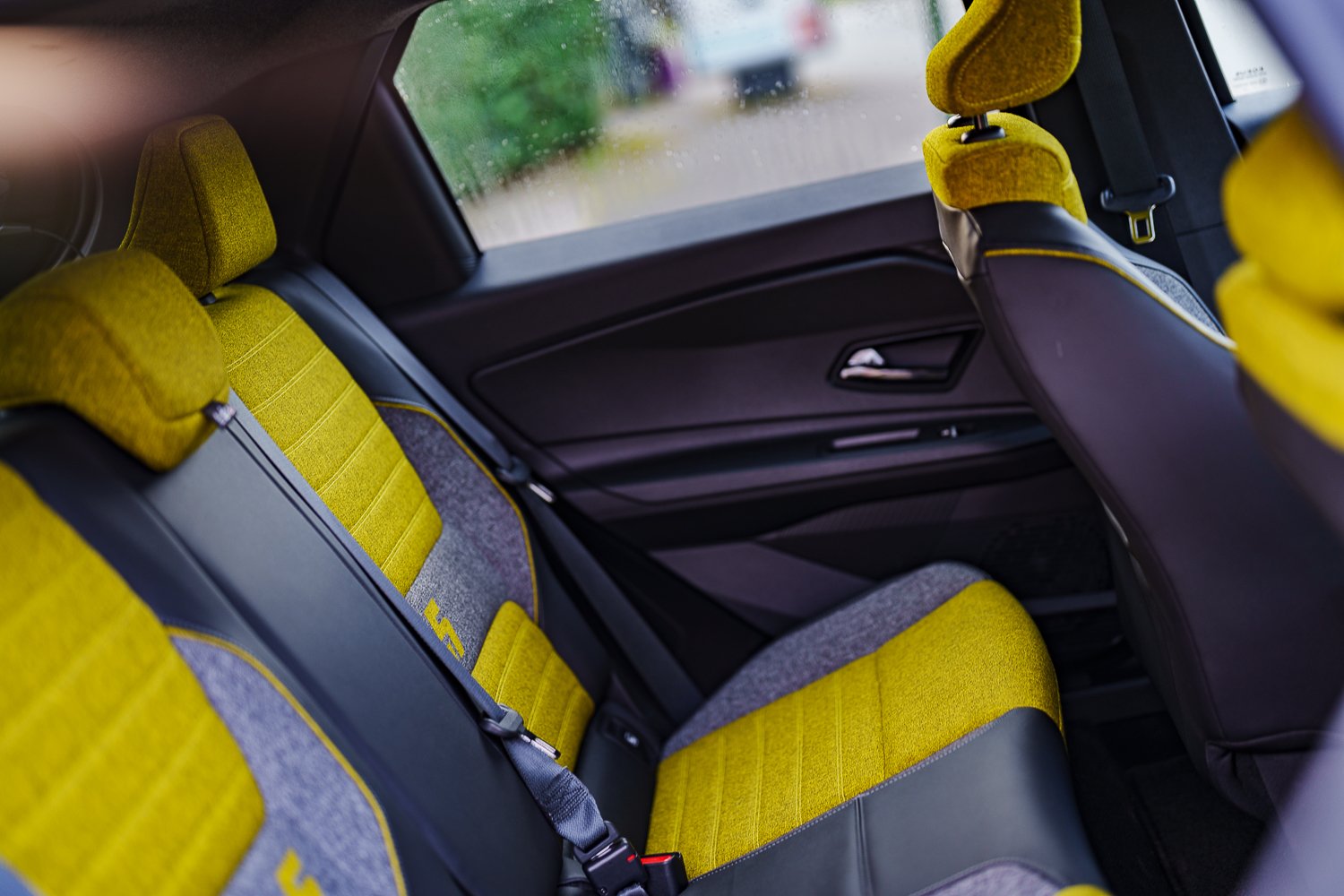
Option Harman Kardon
The other novelty is the sound system signed Harman Kardon (€ 600), already at work at Mini. The result is far from breathtaking, but spatialization is convincing. You can also enjoy a few presets (concert, studio, immersion) stamped Jean-Michel Jarre. Is the additional cost justified? Yes and no. The gain is real, but not spectacular. If you have to choose between the sticker pack (€ 600) and the audio system, the sound system seems a better investment … provided you try it before.
The sound is very encompassing but lack of detail. © Jérémy FDIDA
The subwoofer and the amplifier are housed in the trunk. © Jérémy FDIDA
© Jeurny Fdida
Consumption
As often with electricity, WLTP figures (410 km announced) are difficult to reach in real conditions. Holding 200 km is possible, provided you avoid the highway as much as possible. On a secondary road, consumption becomes reasonable (about 15 kWh/100 km), especially with a battery at a good temperature and by adopting a neat eco-driving.
But as soon as we move away from these ideal conditions, consumption soar. Especially since it aligns roughly that of much heavier and powerful vehicles, such as the model performance.
The consumption becomes reasonable again on small roads, hot battery. © Jérémy FDIDA
A point of comparison, in strictly the same conditions, with the same temperature settings and the same speeds. © Jérémy FDIDA
Less than 15 kWh/100 km average. It will be more effective to avoid the highway. © Jérémy FDIDA
But not much more for a heavier 500 kg car (the power at this speed is not significant).
Heating turns out to be gourmet, and the heat pump does not seem to be activated until late. Except in eco mode, but, honestly, it is too low to properly heat the cabin, especially so that the air reaches children on the back. Especially since this device is not necessary on other vehicles in this category.
Recharge: Provide a minimum half hour
We made two fast current recharges:
Cold, on Electra terminals: the R5 did not exceed 40 kW, with a timid start at 12-15 kW which has evolved slowly.
In the photo, the R5 is on the left, the model there. The two cars part of the same place after being parked all night, made the same journey, at the same speeds and with the same temperature settings. In both cases, the route planner was used to reach the terminal.
Note that the R5 displays 66 % load, because it had left a little more loaded than Model Y.
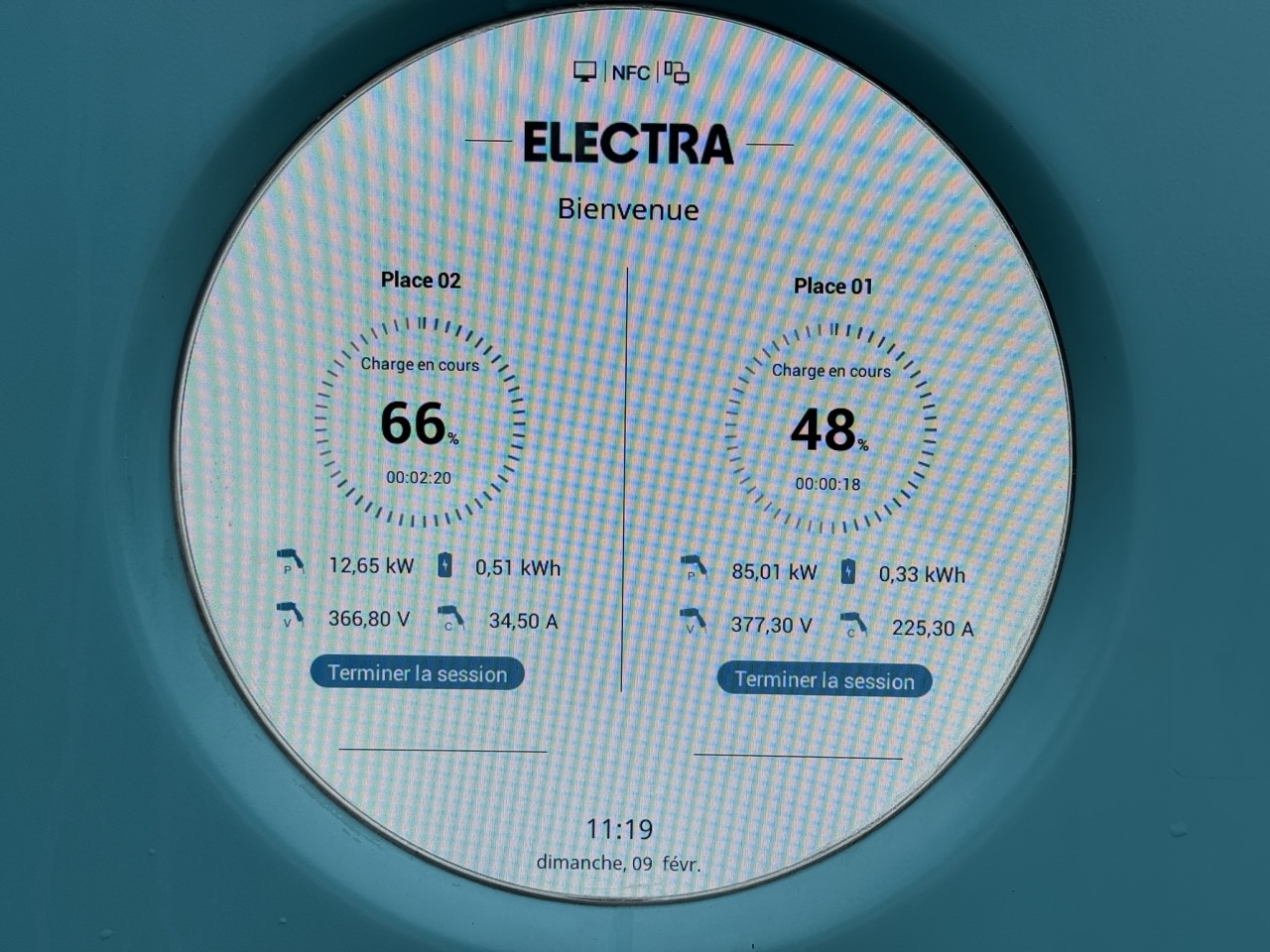
Hot, on ionity terminals: the power increases to 75 kW. The curve is quite stable, but without being exceptional. In total, it took 19 min 42 s to recover 21 kWh.
In short, it is better to load at home, because the R5 is not really designed for the long journeys punctuated by fast loads. It is in the low average of the cars of this segment.
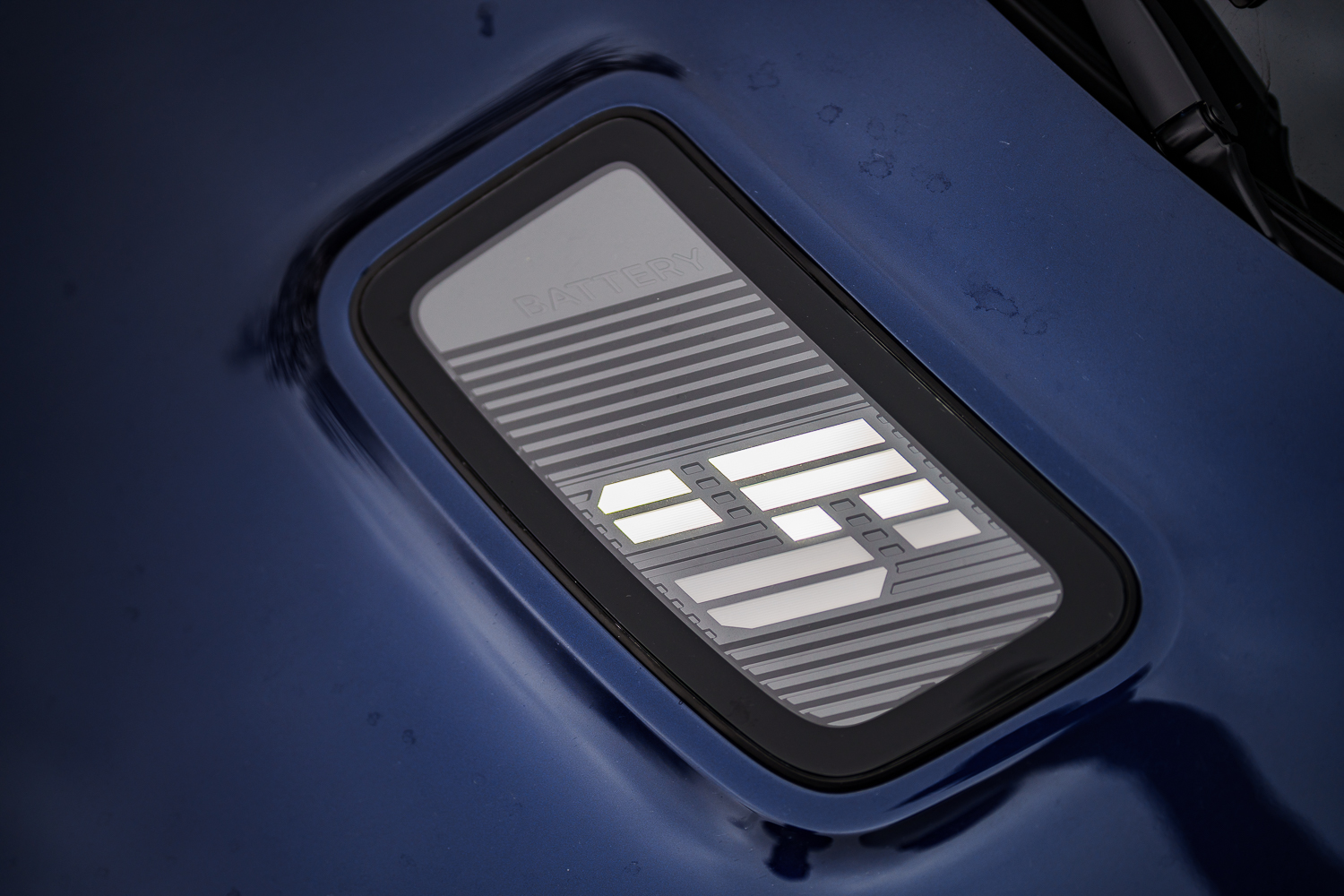
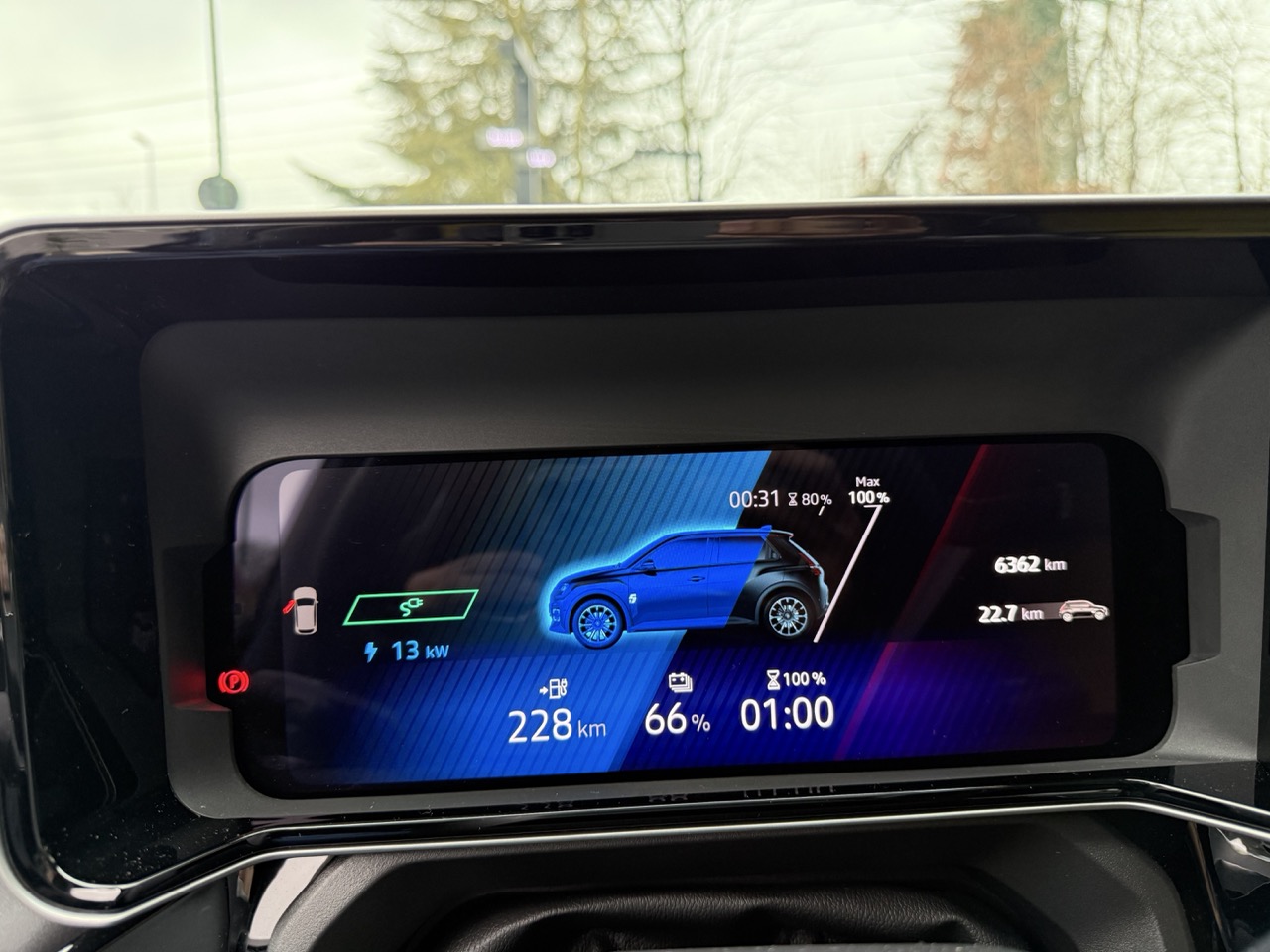
Conclusion: Who is the R5 for?
The R5 is not a bad product, but its promise remains a little limited: the continuous current recharge is slow, and the real autonomy too short to consider long journeys (200 km at best, excluding highway). Without forgetting the reduced space at the rear and an ergonomics that would have deserved more work.
However, if you never go to the other end of the country, you are looking for a second car as pleasant as it is stylish, and you can recharge it at home, the R5 will do the trick. You will even love it.
Seeing her in the parking lot, lighting up with our approach, provides a little emotion … (but that is the boomer who speaks).
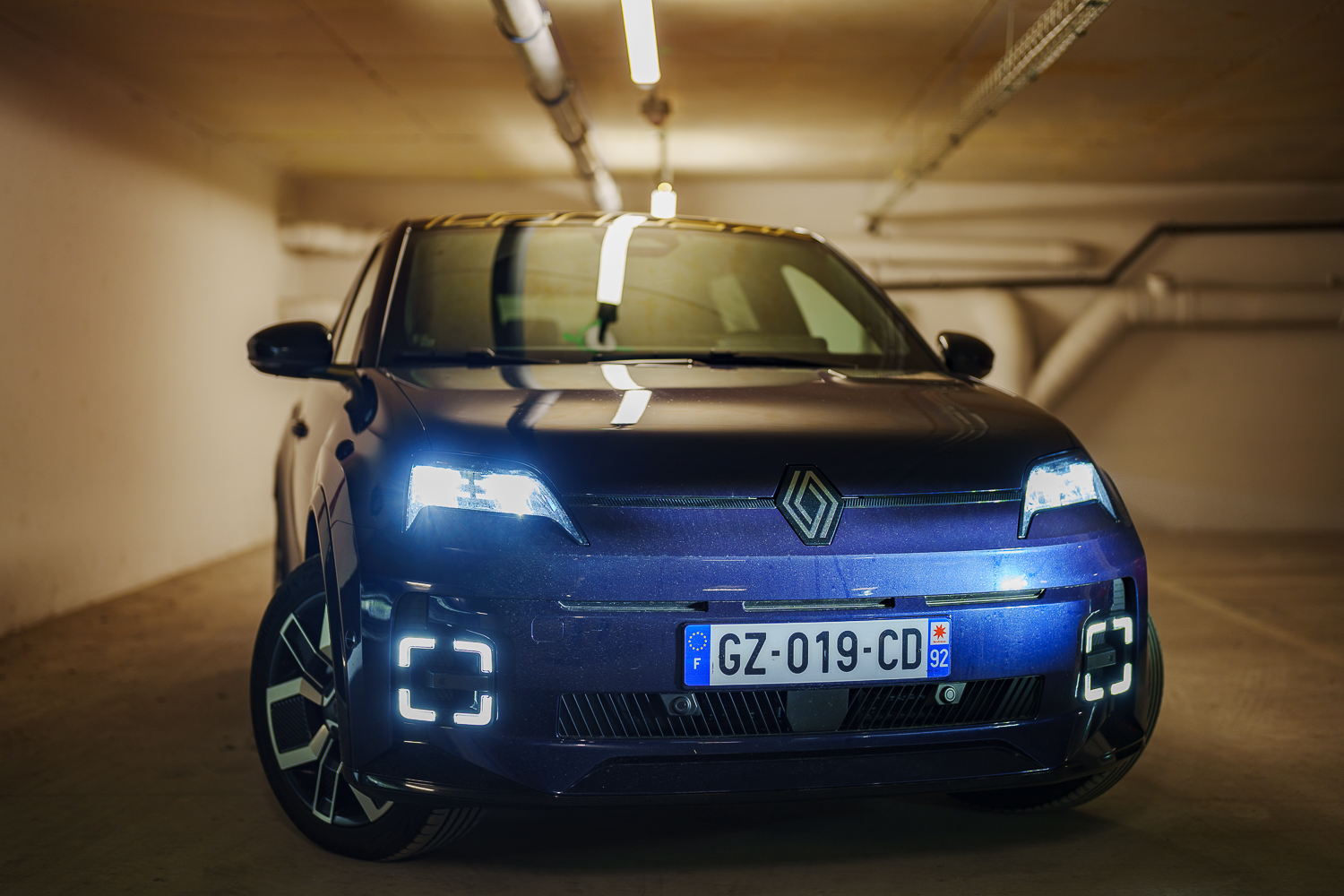
Finally, the term city car has often returned to the comments. However, this notion has never designated a full -fledged automobile category: it is a journalistic distortion. We rather speak of segment A, that is to say economic and versatile vehicles, capable in theory as well to cross France and to serve every day to go to work.
Cars that have joyed young people’s permit and tours of the evening captain.
Only the electric car introduced the idea of a strictly confined “city car” in the city, which is paradoxical when you know that the ecological argument also aims to limit automotive density in urban centers.
Finally, the R5 can perfectly suit in rural areas, where 33 % of the population resides (according to INSEE). The possibility of recharging at home and journeys often less than 200 km makes it a completely relevant option.
Price and assessment
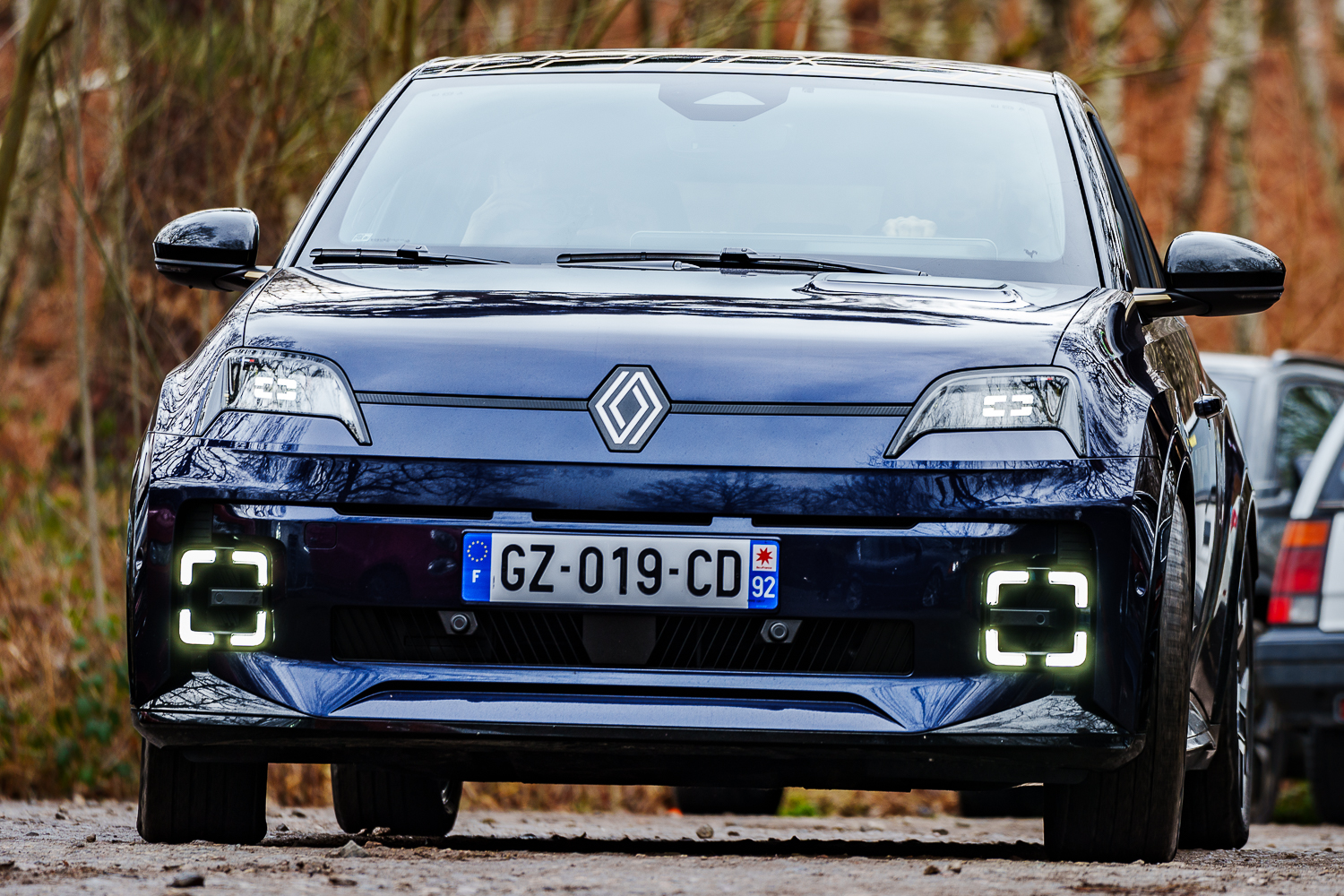
The tried model appears at € 37,540 (excluding bonus). Enough to make, certainly. But if you correspond to the user profile mentioned above, you could be seduced by its look, its compactness and its driving pleasure. Provided you accept this paradox: an aesthetic and technological favorite, at the cost of some autonomy and space sacrifices. On our side, we pass the note at 7/10. An additional point for improved driving pleasure on this model and reasonable consumption at reduced speed (90 km/h maximum).
🟣 To not miss any news on the Geek Journal, subscribe to Google News. And if you love us, .

